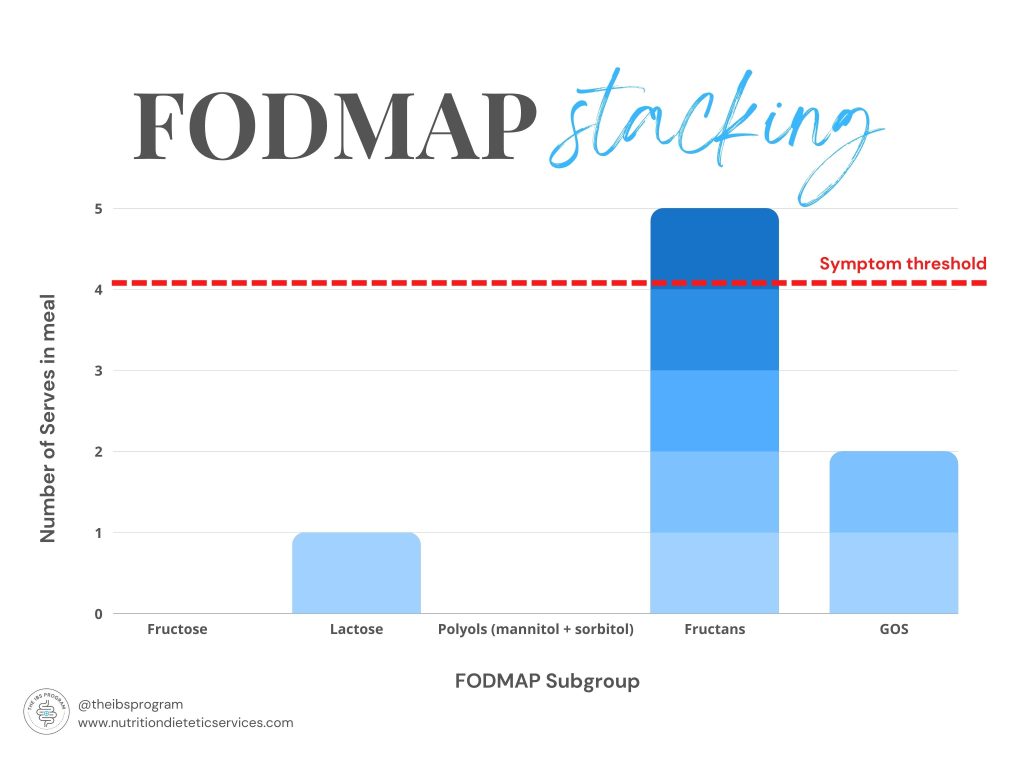FODMAP stacking could be the reason why your low FODMAP diet is still causing you symptoms. It can occur when you are not paying attention to the amounts of food you are eating along with the types of foods.
FODMAPs are fermentable components of certain carbohydrates found in the food we eat. They are incredibly beneficial to the health of our gut, but in some people, they can cause digestive discomfort and symptoms.
Learn more about what FODMAPs are here.
As the name suggests, it means to eating the same foods high in certain FODMAPs at once in a meal, or across a day.
Usually, on the low FODMAP diet, consuming small amounts of many different foods will not provoke too many symptoms, because it is assumed there is only a small FODMAP content in each small amount of food.
As soon as we increase either the amount of food, or certain types of food, or both, this can cause stacking of FODMAPs.
For example, refer to the diagram below as you read the following scenario; if we choose many high-fructan foods in one meal, even though they may be low FODMAP individually, they become stacked. This means, many small amounts of FODMAPs equal a larger amount of FODMAPs. This may then exceed your symptom threshold and provoke symptoms.

For the everyday person without gut discomfort, this is not a problem at all.
However, those who suffer from IBS generally have a symptom ‘threshold’ whereby they do not experience symptoms when they consume a certain load of each FODMAP in a meal, or across a day.
Stacking FODMAPs means a meal low in FODMAPs can still exceed that threshold and therefore cause symptoms.
See our 7-day low FODMAP meal plan, or 50 low FODMAP snack recipes.
Look at your meal against the FODMAP subgroups and assess whether your meal is particularly high in a certain FODMAP.
If it is dominant in one particular FODMAP, try to remove certain things from your meal or reduce the amount of each component and increase other parts of the meal instead.
If you need help undergoing the low FODMAP diet properly with support, or learning more about FODMAP stacking in your personal situation, book an appointment with our Dietitian who specialises in IBS and the low FODMAP diet, or join The IBS Program.